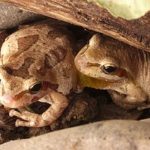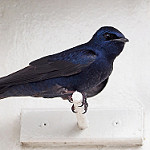Hardwood Rangeland Habitats: Although there are numerous ways to classify California’s oak-dominated woodlands, the five vegetation types used in the California Wildlife Habitat Relationships System (CWHR) are the most commonly used and are described below. The CWHR types are based on the dominant tree species, and we include information on Valley Oak Woodland, Blue Oak Woodland, Blue Oak-Foothill Pine Woodland, Coastal Oak Woodland, and Montane Hardwood Forest here for your reference.
Valley Oak Woodland Vegetation Composition and Structure
These widely scattered but sparsely occurring woodlands are dominated by valley oaks. Associated tree species in the Central Valley include California sycamore, California black walnut, California boxelder, Oregon ash, interior live oak, California buckeye, and blue oak. In the Coast Range, foothill pine and coast live oak occur in valley oak woodlands, while California black oak occurs with valley oaks at higher elevations. At low elevations close to water, valley oak is associated with Fremont cottonwood and tree willows. Valley oak woodlands vary from open savannahs to closed canopy forests. Dense stands occur along natural drainages in deep soils. Tree density tends to decrease as one moves from lowlands to uplands. The understory shrub layer can be dense along drainages and very sparse in uplands. Understory grasses and forbs are mostly introduced annuals. Mature valley oaks have well-developed crowns and reach maximum heights of 50 to 120 ft. The massive trunks (often up to 6 feet DBH) and branches of mature trees dominate valley oak woodlands.
Ecological Processes
In many areas, there is little valley oak recruitment to replace mature tree losses due to both natural and human causes. This is presumed to be related to moisture competition with grasses and forbs, wild and domestic animals feeding on acorns and seedlings, and flood control projects. Also, fire suppression has encouraged live oak and pine invasion in upland valley oak sites. Valley oaks tolerate flooding and young trees will sprout when damaged by fire. Valley oak woodlands should be able to maintain themselves with natural disturbances such as fire and flooding. However, suppression of fire and flooding has adversely affected sustainability of valley oak woodlands.
Locational Characteristics
Valley oaks are endemic to the state, meaning that they are found only in California. They occur in a patchy distribution throughout most major lowland valleys including the Sacramento-San Joaquin and those valleys occurring in the Coast Range and Transverse Range. Many valley oak woodlands occur as isolated stands in areas where surrounding habitats have been modified by agricultural, urban, and suburban activities. Annual grasslands, riparian forests, and other oak woodland types occur adjacent to valley oak woodlands. Conversion of valley oak woodlands to irrigated agricultural land uses has had the largest effect Von the acreage decline of this type.
Physical Characteristics
Valley oak communities generally occur on deep, well-drained alluvial soils found in valleys and foothills below 2,400 feet. However, valley oaks can occur up to 5,600 feet as components of other vegetation types in the south Coast Range and Tehachapi Mountains.
Vertebrate Wildlife Species Associations of Valley Oak Woodlands
These PDFs provide a list of the species of amphibians, birds, mammals, and reptiles that are predicted to use valley oak woodlands habitats. The lists are derived from Version 5.0 of the California Wildlife Habitat Relationships System (CWHR) and includes those species that are predicted to use one or more hardwood rangeland canopy cover classes for breeding, feeding, and/or cover. Most waterbirds like ducks, geese, gulls, and shorebirds were not included in the CWHR predictions because they are mostly associated with lakes, ponds, and rivers. The CWHR System is managed by the California Department of Fish and Wildlife.
The tables also indicate which of these hardwood rangeland species are predicted to use several important habitat elements of the California hardwood rangeland habitats. The elements listed include: acorns; riparian habitat; logs, slash, and brush piles; snags; burrows, rocks, talus, caves and cliffs; and vernal pools and wetland.
Also included are those species which have special status designation by the California Department of Fish and Wildlife and/or the U.S. Fish and Wildlife Service. Most of these species, particularly mammals and reptiles, have locally restricted subspecies that have a special status designation. If you have a species with a special status, you need to get more detailed local information on whether your population is in a subspecies with this special designation. You need to ensure that there is adequate protection for these species, and to make sure that you are not in violation of state or federal endangered species regulations.
Landowners and managers using these lists can get a general idea of which species might be located on a particular property, and which important habitat elements are important to their use of an area. These lists should not substitute for local-based surveys. Landowners may wish to consult with local CDFW biologists, or consulting wildlife biologists for more detailed local surveys of their lands.





